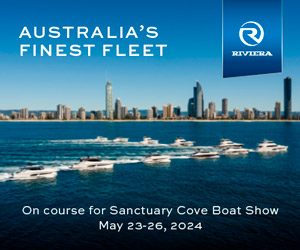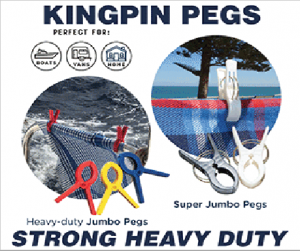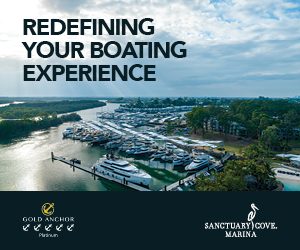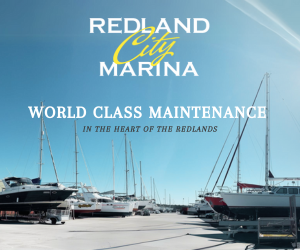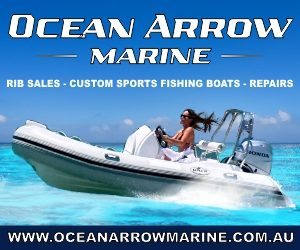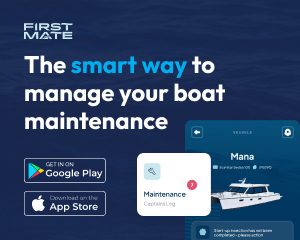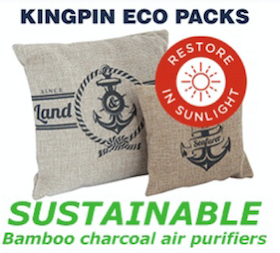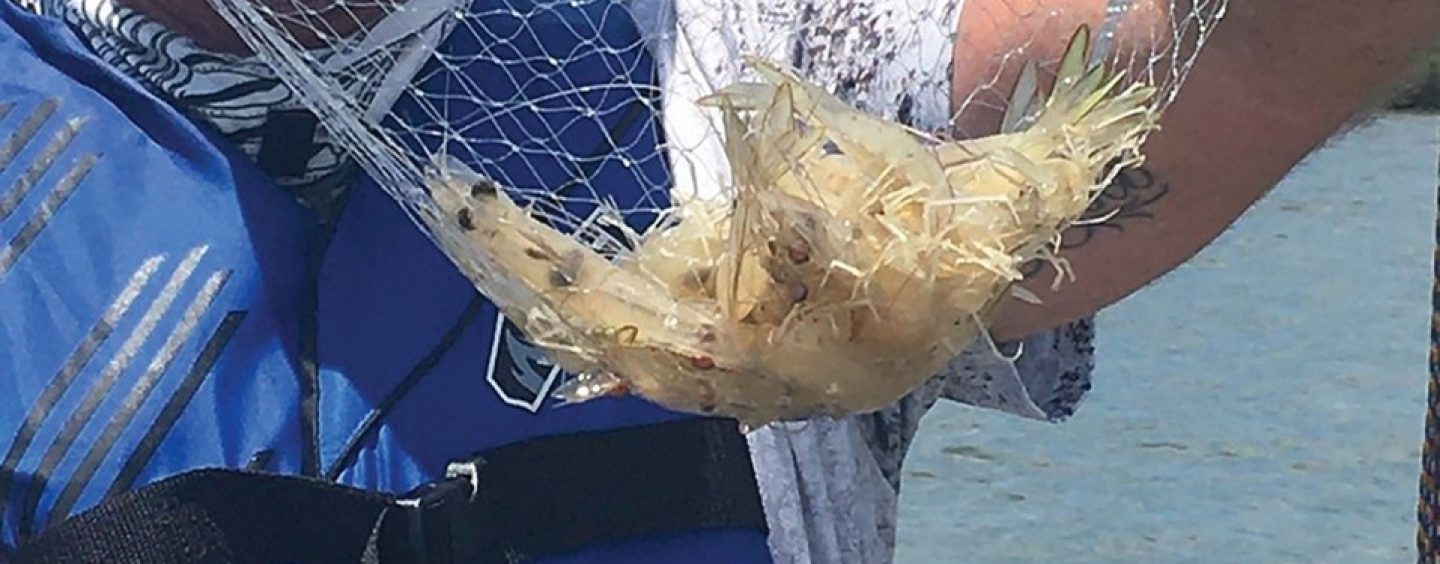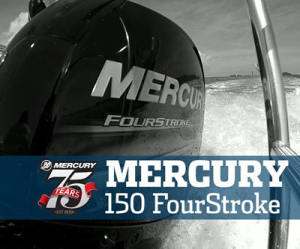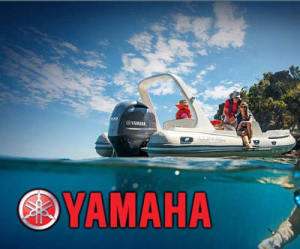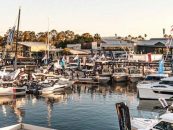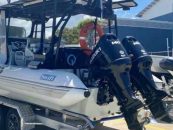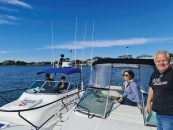For the first time in my life, I was surrounded by literally thousands of banana prawns scooting across the surface in a creek no wider than a standard street. I tried to gather my cast net up as fast as I could manage.
I was drenched to the bone and shivering as rain pelted down, and the strong southerly blew up the channel along the mangrove island. Finally, I released a cast and the net rose to surface with hundreds of tasty banana prawns, flicking their way up to the top of the net to form a perfect ball.
This was in the days before the top pocket cast nets were available. In fact, it was so long ago that only a few blokes knew about the prawn run, and a sounder was not required.
There were no bag limits back then, so it was not uncommon to snare over fifty kilos in a single session. That is a lot of prawns! And it’s amazing how many new friends you acquire when word gets out.
As time went on, the word did get out, and more and more anglers appeared on the prawning scene. It became noticeable that certain anglers were upgrading their boats. Then the following happened: outboard motors, massive nets being thrown, mobile phones introduced, and surprisingly, a rise in prawn dishes available at various local restaurants. The black market trade on banana prawns had arrived, and it was something that had to be dealt with quickly. The laws were about to change.
Today, strict laws and bag limits apply to all recreational anglers who target the prawns during their annual run between the months of April and May. Cast nets have spread limits on them, and mesh sizes have been reduced considerably. A ten-litre bucket applies per person. The fisheries department conducts regular checks to ensure all are abiding by the rules. Every year, the prawn debacle hits the media as boat rage, hidden holding areas, and the illegal selling of prawns still take place.
The waters between the Pimpama River, Jacobs Well and further up towards the Logan River, are the main areas targeted, as shallow mud flats and deep holes are constantly found throughout this region. Rain is always welcome during the lead-up to the prawn season, as a good deluge is required to flush the prawns out of the creeks and rivers, and force them down into the deeper holes while heading out to the bay. Surprisingly, banana prawns do not head to the ocean. They will school up in Moreton Bay, and from there, I guess only a prawn knows where they move to die off.
As for the use of quality electronics, having a good sounder is essential, as you need to read the bottom closely to find where the prawns are schooling. Once you have seen a patch come across the screen, it is generally allhands-on-deck to cast the nets. The feeling of a good haul can be comparable to sinking your teeth into a juicy eye fillet steak, or a cold lager at the end of a hard day’s work.
You can target the prawns off the bank. But it is difficult if they are 20metres off the bank, and rather frustrating when you see everyone else netting them and you’re the odd one out. A tinny is best as you don’t mind getting shell grit, mud and seaweed or jellyfish in the bottom, and it is easier to clean out than a 6m fibreglass half-cabin boat. A bilge pump is definitely required to push the water out. If you have a jet ski, why not use that? Any means of getting out there is worth it.
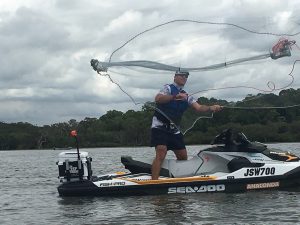
My suggestion is to learn how to cast the cast net. For a good quality net, you’ll be paying upwards of $200-$300 plus. But when you can catch a few kilos each trip, they quickly pay themselves off over buying prawns. My recommendation is the Pro-Throw Net which is available at all Anaconda Stores. The bloke who makes them, Drew Argos, knows a lot about prawns, and even more about nets.
The reward for prawning is definitely fulfilling! And if you are into a spot of fishing as well, try keeping a few alive, and take them down to the seaway or Jumpinpin and use them around the ends of the walls. You will be surprised what you can catch!
Fishing and prawning in Queensland are governed by the Department of Agriculture and Fisheries. When prawning, there is no size limits on takes, possession limits on takes is 10 litres per person/20 litres per boat (with 2 or more people on board). Importantly, you must not possess prawns with the heads or any other part removed, unless the removal is for immediate consumption. www.daf.qld.gov.au


